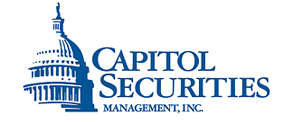By: Kent Engelke | Capitol Securities
The NASDAQ plunged 4.4% for its biggest single-day drop since August 2011 and now is officially in “correction territory” falling 12% from its August peak. APPL, AMZN, MSFT, and GOOG comprise about 25% of the index’s value and were responsible for the majority of yesterday’s decline.
The S&P 500 and the Dow had declines of 3.09% and 2.41% respectively and are negative for the year. October is the worst month for the S&P 500 since February 2009.
The pivotal 200-day moving average on the S&P 500 fell for the first time in 2½ years. The S&P 500 has declined 13 of the last 15 days, something that has not happened since March 2009.
Many times I have commented about the outsized impact of algorithmic or technology-based trading has upon the markets. In rising markets, little regulatory attention is focused upon this domination.
Yesterday I read SEC comments about the recent increased volatility, the product of many things including the normalization of interest rates and other geopolitical events which are fluid. Typically these are things traders are meant to deal with and provide stabilization when needed.
However, today, a discussion is rising about the neutering of market making capabilities which have robbed the markets of predictable and constant liquidity. The SEC states that “it is such a potentially systemic and intractable problem” that it is largely left to academics to dismiss and the regulator hoping everything will work out.
To me, this is a powerful admission, an obvious admission to anyone who has worked on a fixed income (and equity) trading desk. It is my firsthand experience liquidity is lacking in the fixed income markets, a lack of liquidity that the academics [and perhaps regulators] believe is still present.
Historically, money center banks provide liquidity but because of regulatory fiat, money center fixed income bond inventories are down over 90% from levels of 10 years ago while the bond market has swelled three times in size.
Yesterday, I referenced former Fed Chairman Greenspan’s remarks that unfortunately ”a system” needs to come apart at the seams before any action occurs and most often “one does not see these crises arising until it is at your doorstep.”
Continuing with this theme, JP Morgan warned yesterday of the inherent dangers of index (passive) investing. The bank states there is $7.4 trillion of assets managed by passive funds around the world concentrated primarily in large-cap stocks that will exacerbate a rout.
JP Morgan states that passive investing seems to be trend following, with inflows pushing equities higher during bull markets and outflows likely to magnify their fall during corrections.
Back in 2007, the strategy’s overall size amounted to about 26% of all managed funds with about 15% outside of the US. Eleven years later those figures have jumped to 83% and 53% respectively.
JP Morgan states passive investing is “far more skewed to large caps than what their market cap would command… passive AUM in large caps is 10 times that of small and mid-caps making this asset class far more exposed to momentum selling during market downturns.”
Wow! In my view, the comments from both the SEC and JP Morgan are significant and should be reflected upon.
The next question at hand is whether the individual security outperforms the indices in this rotation of monies back to Main Street from Wall Street. In other words, will the typical no-name stock that is not owned by the ETFs (90% of listed securities comprise less than 10% ETF ownership according to SocGen) outperform, the inverse of the last 10 years?
If one uses history as a guide, the answer is yes.
What will happen today?
Last night the foreign markets were mixed. London was up 0.18%, Paris was up 1.45% and Frankfurt was up 0.48%. China was up 0.02%, Japan was down 3.72% and Hang Sang was down 1.01%.
The Dow should open significantly higher. Equities are vastly oversold, several high profile companies surprised on the upside and there are no major changes in the geopolitical environment. The 10-year is off 8/32 to yield 3.14%.

















